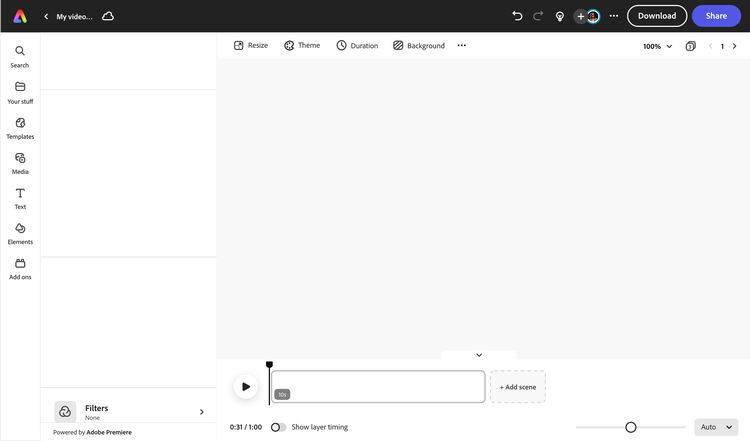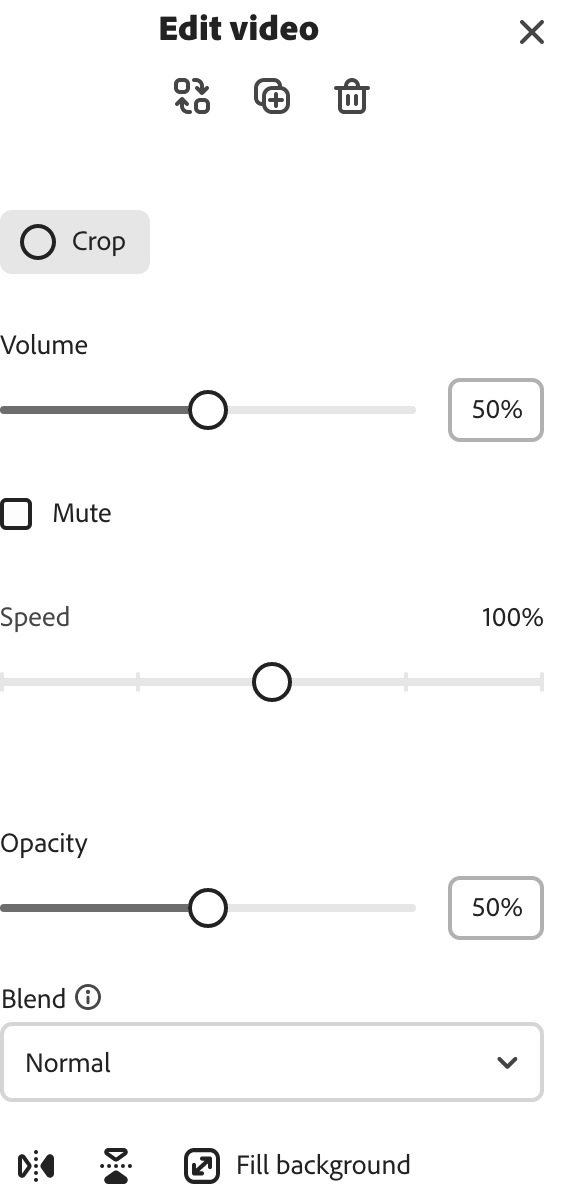Make custom video ads with Adobe Express on your side.
Get the word out about your brand, business, or product to your online audience with a stunning video ad made in Adobe Express. Use the drag and drop online editor to make professional quality video ads that let your visual message shine for Instagram, Facebook, or YouTube in just a few taps. Upload and edit your footage, choose a free video advertisement template, then customize with color schemes, branded assets, and so much more. When you’re done, download and share to any digital destination. No editing know-how needed.

How to make an advertisement video.
Download & share.
Enhance with animation & music.
Edit clips & add your text.
Pick a free video advertisement template.
Open Adobe Express.
Enjoy powerful video editing tools at your side.
Trim, split, & crop.
Cut out unnecessary footage & rearrange scenes with ease.
Easily resize videos.
Create a video ad once, then resize instantly to share across social channels.
Add animated transitions.
Select any element in your video to animate in just a few clicks.
Speed up or slow down videos.
Slow down or speed up scenes in seconds.
Collaborate with others.
Invite others to edit the same video project at the same time.
Download & share anywhere.
Create & save as many videos as you’d like. Share them anywhere.
Schedule out content.
Plan, create, and publish video ads, social posts, stories, & more in one place.
One-tap filter effects.
Apply stunning filter presets to videos in one click.
Make engaging video ads from your browser.
The all-in-one online editor.
Create online video ads, marketing videos, posts, flyers, & more for any online destination.
Customize with Adobe Stock design assets at your side.
Create ads with rights-cleared, royalty-free stock soundtracks, video, images, graphics & so much more.
Tons of free video ad templates.
Edit videos from scratch or customize free video advertisement templates with your own content.






